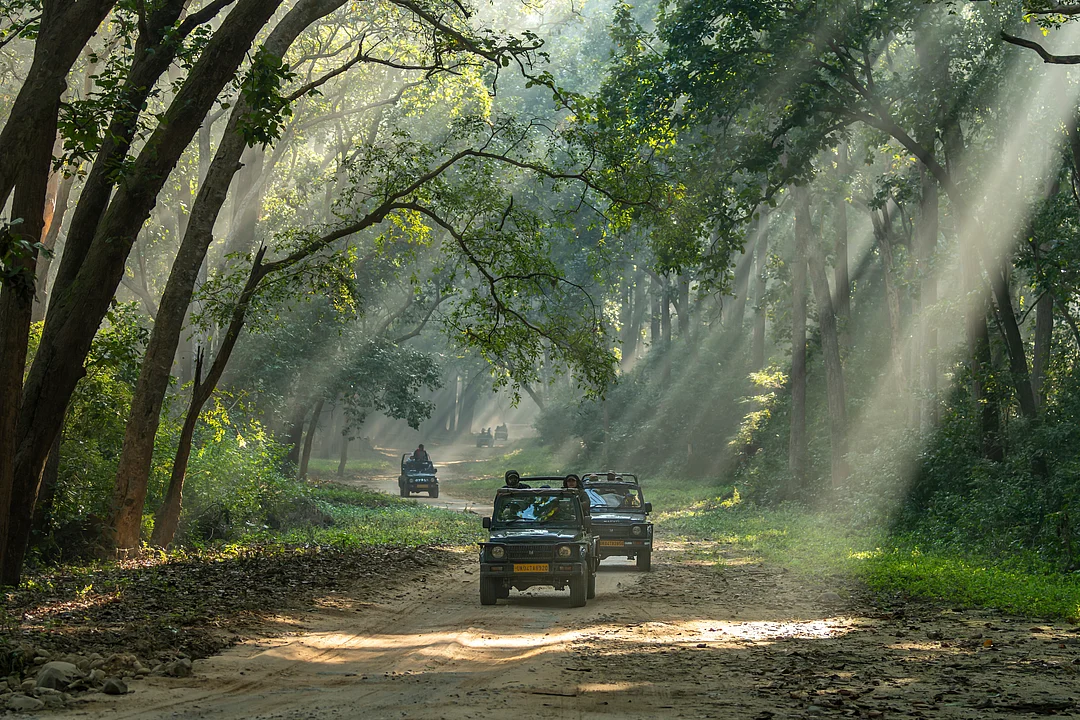The re-opening of national parks in time for winter has seen a flurry of people embarking on wildlife safaris to see tigers, migratory birds, elephants, rhinoceros and more. The post-monsoon undergrowth gives way to winter mists that are conducive to seeing India’s national animal and other wildlife species. According to Ishana Vats, the manager for tours and product development at Nature Safari India, while people assume that the summer months are when tigers are most active, it is not entirely true. “Winter months (December–February) are extremely conducive for tiger sightings as well. The green slowly merges with hues of blue, creating a perfect backdrop for the tiger’s deep ochre coat,” she says. “The contrast one gets while photographing such frames alongside the glistening dew-ridden grasslands is phenomenal, to say the least. Additionally, in winter months, during the day, you get to see tigers walking on the road, patrolling, marking their territory and searching for their mates by loud roaring. At times, hearing a tiger roar in a jungle is more exciting than seeing one.”
Nature
Planning A Wildlife Safari This Winter? Here's Everything You Need To Keep In Mind
Outlook Traveller spoke to Ishana Vats, who manages tours and product development at Nature Safari India, about her top tips for a winter wildlife excursion

A winter safari takes place in Jim Corbett National Park, Uttarakhand
Photo: sourabhbhartiphotography/Shutterstock
A winter safari takes place in Jim Corbett National Park, Uttarakhand
Photo: sourabhbhartiphotography/Shutterstock
CLOSE




